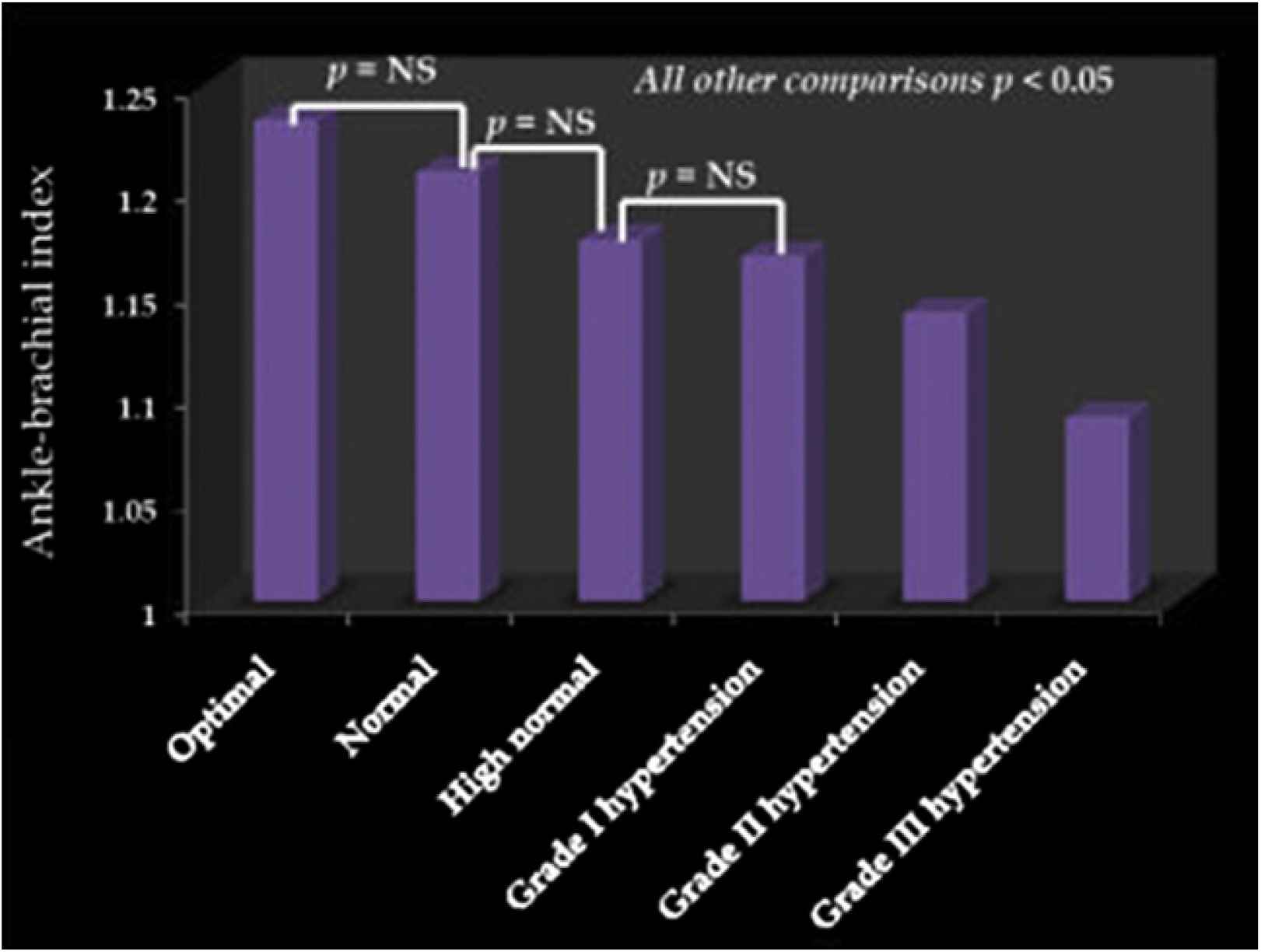12.20 ANKLE-BRACHIAL INDEX AND INFLAMMATION IN RELATION TO BLOOD PRESSURE CLASSIFICATION: UPS AND DOWNS
- DOI
- 10.1016/j.artres.2011.10.203How to use a DOI?
- Open Access
- This is an open access article distributed under the CC BY-NC license.
Background: Hypertension is associated with ankle-brachial index (ABI) and C-reactive protein (CRP), which are both predictors of cardiovascular risk. We investigated the differences in ABI and inflammation between the subgroups of the blood pressure (BP) classification (optimal to grade III hypertension), which was proposed by the European 2007 guidelines for the management of hypertension.
Method: 1225 never treated consecutive subjects (53±12 years, 728 males), with no known cardiovascular disease were divided into six subgroups according to the classification of the 2007 European guidelines: optimal (n=29), normal (n=71), high normal (n=162), grade I hypertension (n=552), grade II hypertension (n=308), grade III hypertension (n=103). ABI was calculated for each leg with the higher of the 2 ankle pressures in relation to the higher of the left or right brachial systolic BP.
Results: ABI decreased from the subgroup with optimal BP to that with the higher brachial BP level (p<0.001), and this result remained significant even after adjustment for age, gender, BMI, blood glucose, mean BP, smoking status and heart rate (p<0.001, Figure). CRP increased from the subgroup with optimal control to that with the higher BP level (p<0.001), however, this result did not remain significant after adjustment for the abovementioned confounders (p=0.175, Figure). The between groups comparisons adjusted for the abovementioned confounders are presented in the Figure.
Conclusions: This study shows the gradual decrease of ABI and increase of CRP, according to the European BP classification, even in patients with normal BP. These findings provide further insights into the role of ABI and inflammation in assessment of cardiovascular risk in hypertension.

Cite this article
TY - JOUR AU - D. Terentes-Printzios AU - C. Vlachopoulos AU - P. Xaplanteris AU - D. Kardara AU - A. Samentzas AU - A. Synodinos AU - M. Abdelrasoul AU - N. Alexopoulos AU - N. Ioakeimidis AU - C. Stefanadis PY - 2011 DA - 2011/11/29 TI - 12.20 ANKLE-BRACHIAL INDEX AND INFLAMMATION IN RELATION TO BLOOD PRESSURE CLASSIFICATION: UPS AND DOWNS JO - Artery Research SP - 205 EP - 205 VL - 5 IS - 4 SN - 1876-4401 UR - https://doi.org/10.1016/j.artres.2011.10.203 DO - 10.1016/j.artres.2011.10.203 ID - Terentes-Printzios2011 ER -
